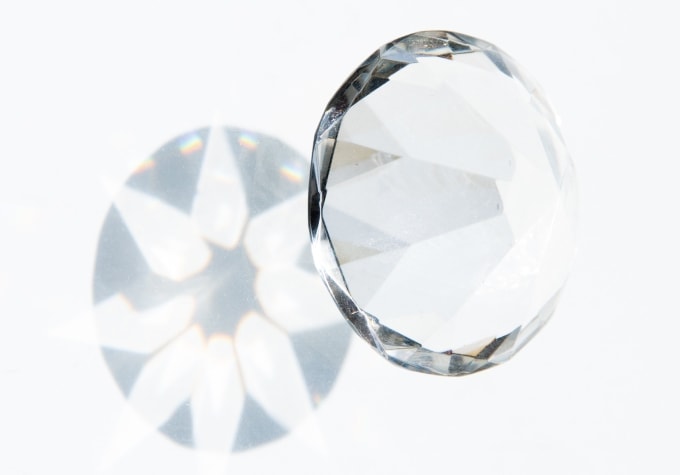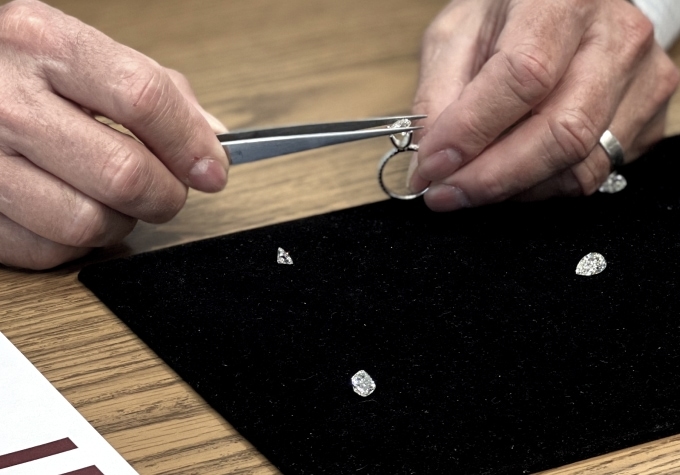What we look for when buying diamonds.
No matter why you are selling your diamond(s), there is a slight moment of stress when parting with the precious stone(s). Many individuals have a sentimental attachment to these stones, as they are often gifts from loved ones or heirlooms passed down from the generation before them. When it comes to selling a diamond, many people stress about the value of their stones. At the Diamond Broker, we understand that each diamond carries with it a story of a lifetime, which is why we are transparent about what criteria we use when valuing a stone. While there are many characteristics that make up the overall value of the diamond, these are the characteristics we base our estimation off of:

Cut
Cut refers to the proportion and finish of your diamond. Cut helps capture the diamond’s fire, as this quality pertains to how a stone captures and reflects light. Three basic terms can describe the cut of your diamond:
Built-Up Diamond cuts are known for their long tails, which are proportionally larger than the head of the diamond. This traps light within the diamond, which then reflects out of the lower half creating the illusion that your diamond is a deep well of light, giving it a hollow appearance.
Flat Diamond cuts are, as the name implies, flat. Their tails are short, and the head is small, which gives the diamond its flat appearance. Light gets caught on the edges of the diamond and then releases in the bottom, which results in the diamond looking relatively dull.
Ideal Cut Diamonds are the most valuable diamonds as they capture light brilliantly, allowing them to travel around the diamond and then reflect out. This creates a breathtaking glimmer and sparkle which captures the eye. There are several different types of ideal cut diamonds which we happily accept:
Cushion-Cut
Princess-Cut
Pear-Cut
Round-Cut
Marquise-Cut
Emerald-Cut


Clarity
Clarity measures the clearness of a diamond. Each diamond is given a grade of F or I. F diamonds are flawless, so they are extremely sought after and rare. I diamonds have inclusions, which doesn’t necessarily mean that the diamond is invaluable. Certain cuts, such as the emerald cut, use inclusion to show off the inside of the diamond to give them a unique look.

Color
While many people think of diamonds as exclusively clear and colorless, they can actually have a tinge of yellow. Yellow diamonds are typically not of high quality. When we value diamonds, we generally look for diamonds that have color grades of J, K, and L. These diamonds are near perfect and have a gorgeous shimmer to them.

Carat
Carat refers to the size of the diamond. For example, the ever-popular 1-carat diamond weighs about 0.20 grams. The larger the carat of the diamond, the more expensive it is.

Diamond Certification
If you received a certificate when you or your loved one bought the diamond, that could give a clearer view of the diamond’s history. This grading report will be taken into consideration when evaluating your diamond.

Condition of the Diamond
As with most items, diamonds take a beating over time. Depending on how well the diamond was cared for, the number of chips or abrasions may be minimal, or they may be extensive. A diamond that has taken a beating will have to be recut to remove the imperfections.

Market Demand
Depending on the trends, diamond values can increase or decrease based on shapes and characteristics. Some diamonds may be more sought after than others, so knowing what cuts sell can tell you when it is best to sell your diamond.

Ready to sell a diamond?
Setting up a meeting with us will allow you to go over all the options you have in selling your diamond. You can share with us the details of the item, allow us to review it, and we can give you a fair price or show you options to trade in your piece.